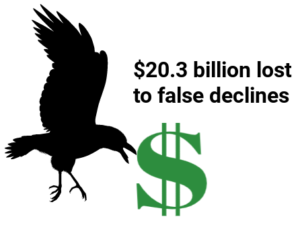By Jeff Domansky, Jane 4, 2021
New research from Checkout.com and Oxford Economics shows that disconnected payments cost merchants more than $20.3 billion in the US, UK, France, and Germany last year. The research also identified those disconnects and where improvements can still be made in the complex payment relationship.

“Payments have morphed into a strategic business function that fundamentally shifts the way that money flows into and out of a business. They have become a strategic weapon for the most progressive businesses,” writes Checkout.com CEO and founder Guillaume Pousaz in the report Executive Summary.
“We wanted to journey from consumer through the checkout into the merchant business and beyond, to follow the twists and turns of technology and intent, operations and strategy, money and data that make up this thing we call ‘payments’. The black boxes and paradoxes were what we found along the way,” Pousaz adds.
The findings show that once identified, improved performance can still be achieved by providers, technology, within payments teams, and inside merchant organizations.
Staggering cost of false declines

The cost of false declines to merchants and the digital economy is staggering – estimated at $20.3 billion last year in the four countries surveyed alone.
“The granular detail shows that merchants are losing competitive advantage: more than $12.7 billion was handed from first choice merchants to their competitors — an expensive gift indeed when we factor in the marketing and nurturing investment too. Meanwhile, the hit to the digital economy totaled more than $7.6 billion as a result of truly disgruntled customers who gave up the intended purchase completely,” the report says.
Data matters when it comes to performance and risk
Many merchants (60%) surveyed said their payments data were not informing their business strategy or innovation. Most did not have the actionable data they need to improve business performance:

- 65% of merchants surveyed do not receive detailed raw response codes on failed payments
- 41% do not get any actionable analytics with their payments data
- 40% did not receive transaction data which integrates with their own data internal systems
- 48% are not provided a detailed breakdown of their payments costs from their providers to allow them to help drive down costs
- 67% do not receive fraud and chargeback analysis data.
For businesses to grow, better authorization rates are part of the solution.
“Payments are siloed. They need to be connected. Your payments strategy needs to align with your overall business strategy. High growth merchants surveyed had two things in common: a clear and aligned payments strategy and C-level buy-in,” the report said.
Researchers found merchants are looking for help to connect pay-in and treasury across FX, settlement, cashflow and liquidity management, pay-out, and financial regulation. Yet, only 29% of merchant businesses surveyed achieved their preferred settlement frequency, and only 28% received their preferred settlement currency. 72% of merchants do not get pre-emptive or proactive regulatory support from their providers ahead of upcoming regulatory changes.
These are surprising results given the knowledge, information, and sophisticated tools available to most businesses today.
A consumer payments perspective

When it comes to the checkout process, consumers placed a high value on the following factors: security assurance through encryption and two-factor authentication; screen optimization across devices; alternate payment method choices; the time to complete checkout; and saved details for one-click payments.
Most interesting in these findings is that customers placed an average value of $4.13 on the security and peace of mind offered by two-factor authentication. “The fact that a 2-step process, which drives up friction and slows the experience, is given the highest monetary value — and at quite some margin compared with other features — apparently runs counter to typical industry narrative which prizes low friction at a near-sacred level,” the report notes.
Only 6% of merchants surveyed believed displaying information about encryption partners was important, and yet 71% of consumers said they looked for encryption information and would abandon checkout with security concerns.
Compared to consumers, merchants placed the highest emphasis on saved details for one-click checkout, screen optimization across devices, 3-D secure where required, and alternate payment options.
Gaurav Yadav, Lead Product Manager at Deliveroo, says the checkout is a bit of ‘continued airtime’ for the brand that needs to be optimized. “You don’t want to have their attention on two different things; you want to get their focus on the right things and in the right place in that short time that you have them,” he says.
COVID payment surprises

The research conducted during April and May 2020 provided several interesting COVID-19 payment surprises, including that payments can be a powerful communications vehicle for merchants.
Digital publisher Scribd decided in the early days of the pandemic to offer its content free for a month to raise awareness of its product and help consumers. “What we found is that by offering that read free month and allowing new customers to sign up without having to put their credit card on file, it actually had an amplifying effect,” says Logan Vander Linden, who leads payments partnerships and operations at Scribd.
“Not only did it achieve what it was meant to do, driving better brand awareness and a really good feeling around the brand, but people actually said, ‘You know what? I’m just going to go ahead and put my credit card on file because I don’t want to have to think about it later to come back and put my credit card on.’ And that was genuinely really surprising to us!” Vander Linden added.
The data suggests consumers don’t think of alternate payment methods (APMs) as options. They think of them as easier access to their preferred payment method. International merchants must provide natural and seamless options and do not overwhelm the consumer with too many choices. While APM options are not top of the consumer’s list of reasons to shop online, not having their preferred payment option is a key reason to abandon, according to the report.
Another key point stressed by merchants interviewed was the importance of close relationships with third-party payment service providers that allowed merchants to respond quickly to circumstances as they unfolded during the pandemic.
False declines – the final insult

The negative impact of false declines is growing. The share of people who did not purchase an item due to a false decline last year in the US was 14.7%, with a $5.32 billion loss of sales. In the UK, it was 16.0% ($1.01 billion lost), and Germany it was 12.8% ($650 million lost), and in France, it was 14.1% ($630 million lost).
Andrew Row, Managing Director of Uber Payments, says, “The worst thing is to lose a customer when they’re trying to initiate payment. That is the most expensive mistake you can make, to lose people at that stage, because you’ve spent so much on customer acquisition, and now you’re losing them for reasons that you might not even be aware of.”
Then there’s the $12.7 billion in sales lost when the customer buys from a competitor where payment is approved. And the corresponding $7.6 billion that’s lost when no sales are completed by frustrated consumers.
“Payments data is critical for ensuring that all fraud or casual abuse is addressed. Once you start understanding that data and making those correlations, you’ll start finding key signals which give you granularity on the fraud you’re really encountering. Too often, merchants only operate within the known universe. But once you have enough indirect data to define your unknown universe, that’s where you actually get good at payments risk,” Deliveroo’s Yadav says.
Data delivers results

The report highlights the correlation between better performance and risk management and better data. Merchants need to close the “delivery gap” and get better information and insight from their PSP’s. This also includes higher-quality data, less complexity in the roster of payment providers, improved currency support, better access to networks, and the elimination of silos between teams and stakeholders.
Good payments data can do a lot, says Vander Linden, who adds that leadership would do well to look at payments data not only to help drive their localization strategy but pricing and product strategy too: “What do payments issues do to our pricing dynamics and what does that do to our content cost in that market? This all relates to our profitability.”
Good data also fuels business growth and innovation, as evident in the success of companies like Uber, Deliveroo, DoorDash, Instacart, and Scribd.
“First, the buzz started in the marketplace — Amazon, eBay, and the like. Then came the cab services — Uber, Grab — and then food delivery. What they all have in common is payments. Digital payments that are efficient. Next, after the food industry, there’ll be something else which will be hot, perhaps even hotter than what we have seen so far. Even at that point in time, the facilitator will be payments and, ultimately, only payments,” Yadav adds.

Innovative payment technology is at the heart of these new business models, and payment functionality has effectively launched entirely new markets. There is much more innovation ahead and very likely sooner than we can anticipate.
You can download a copy of Checkout.com’s free report Black Boxes and Paradoxes: The real cost of disconnected payments here.

